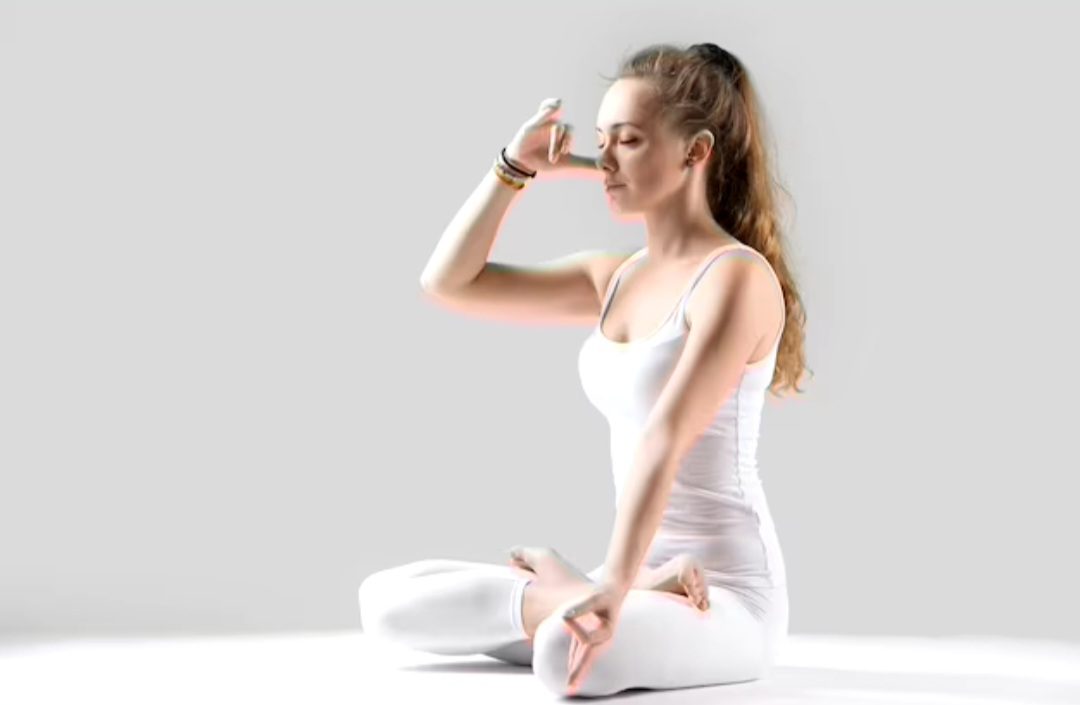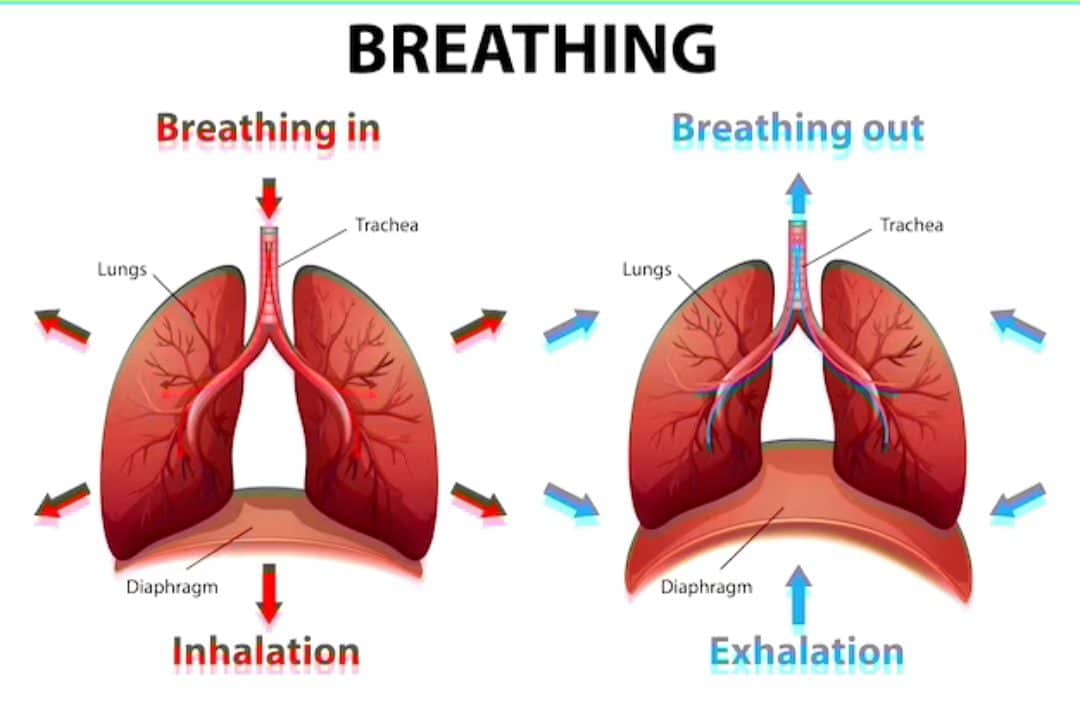What is Deep Breathing: Unlocking Science Behind Peace…
In the hustle and bustle of our daily lives, we often find ourselves more stressed, overwhelmed and distracted.
In this Chaos, Have you Ever wondered if there are simple but still profound solutions to find tranquility and inner peace?
Just Imagine A world where you could take control of your mind, Tapping into a limitless source of calm and focus, Right at your fingertips. It sounds like a far-fetched Dream but the art of Deep Breathing holds the key to unlock these hidden treasures within each one of us.
When we breathe Deeply Our minds become clearer and we feel less Stressed, overwhelmed, distracted, and anxious.
So whether you are a Student preparing for an exam, a busy professional looking to attend meetings or someone who is just looking for peace Deep Breath Can become your power.
It’s something Anyone Can do, Anywhere, Anytime And There’s No Equipment Needed!
Let’s Embark On this Adventure together and Discover the Wonders of Deep Breathing.
So, Let’s Take the First Step Toward an Incredible Journey…

》Understanding Deep Breathing: Embrace Calmness & Well-being
At its Core, Deep Breathing is a conscious and intentional practice that involves taking slow and deliberate breaths, allowing the Lungs to feel complete.
Deep breathing is just the opposite side of Hurried and shallow breathing which brings stressed feelings.
Due to deep breaths, we can engage the diaphragm, dome-shaped muscles under the Lungs.
By activating the diaphragm we can draw air deeper inside the lungs, enabling sufficient oxygen exchange.
》Science Behind Deep Breathing: How They Calm Nervous System
Deep breathing has the power to calm our body, mind, and soul because of How it interacts with
Our nervous system. Our nervous system controls many autonomic functions in our body, such as breathing rate, heart rate, digestion, etc…
Understanding This Interplay can shed light on why Deep Breath is an Important Tool for Relaxation and Stress Reduction.
Let’s Explore the scientific Reasons Behind deep breathing and its Calming effects…
01. Autonomy Nervous System
Our Nervous system is divided into two major parts of the nervous system.
The first one is the Sympathetic Nervous System (SNS) and the Second one is the Parasympathetic Nervous System( PSNS), Together They form the autonomous nervous system, Which controls the main bodily functions such as breathing, digestion, and heart rate.
Sympathetic Vs. Parasympathetic Nervous System
When we feel stressed or threatened, SNS gets activated and prepares us to Fight the challenge or run away from it. This is called a Fight or Flight Response.
During this Response our heart rate becomes high, breathing faster and we become more alert. Such as SNS activated if you see a Lion In front of you.
On the other hand, PSNS is often called “rest and digest” because it works just opposite side of the SNS.
When Your PSNS is activated your heart rate becomes slow, breathe slower and you feel relaxed.
These Two systems get us ready to face different situations that we would have to face.
02. Deep Breathing Effects on Nervous System
Deep Breath plays an important role in influencing the nervous system’s Response.
Whenwe engage in slow and steady breathing, unfortunately, we activate the Parasympathetic Nervous System (PSNS).
That brings relaxation, and calmness and reduces our stress.

03. Stimulating The Vagus Nerve
The key mediator of the Parasympathetic Nervous System’s calming effect is Vagus Nerve. This Nerve is the longest cranial nerve in the body Responsible for the communication between various organs and the brain.
A deep breath can stimulate the vagus nerves and initiate the cascade of Response that promote relaxation.
04. Breathing Vs. Heart Rate Variability (HRV)
Heart Rate Variability (HRV) is the variation in the time between our heartbeat.
When HRV is higher, our hearts are more adaptable to stress and our cardiovascular health is better.
Deep breaths can increase HRV, which is a good sign. It shows that Deep Breathing helps our heart to become more flexible and resilient during stressful conditions.
☆ Key Summary:- Deep breathing has an amazing effect on our nervous system, which is responsible for our relaxation and calmness.
When we take a slow and steady breath, it activates the part of the nervous system that brings relaxation called the Parasympathetic Nervous System(PSNS).
》Different Types of Deep Breathing Techniques
Deep Breath Techniques are a treasure of Relaxation and calmness.
These Simple yet powerful techniques of Deep Breath can have a profound impact on our physical and mental well-being.
Let’s Explore some Popular Deep Breath techniques that can help us manage stress and enhance overall well-being.
》Benefits Of Deep Breathing: Nurturing Mind, Body & Soul
Deep Breathing is a simple yet powerful technique that has numerous benefits especially in managing stressful situations and bringing a calmer mind.
These are the Some list of the advantages that Deep Breath brings to our lives.
1. Stress Reduction
One of the most common and remarkable benefits of Deep Breath is its ability to reduce stress.
As we discussed above, slow breathing activates PSNS which triggers the body’s relaxation Response.
02. Anxiety & Depression
Deep Breath also helps us to manage anxiety and depressive mood.
Conscious breathing can redirect our focus to the present moment and it helps to remove the continuous chatter of thoughts that bring us anxiety and depression.

03. Focus & Concentration
In this fast-paced life, where distraction, Stress, depression, and anxiety can act as guests and stay Permanently in our minds, Deep Breath can emerge as a Beacon of focus and clarity.
During an engagement with deep breathing, we invite a state of mindfulness and presence.
This mental quality can enhance our ability to concentrate and stay attentive to tasks at hand.
The oxygen-rich flow to the brain during deep breathing also sharpens cognitive functions and improves memories and mental alertness.
04. Deep Sleep
Deep breathing can help us to fall into qualitative sleep.
As we deep breathe just before bedtime, it brings us relaxation and makes it easier to fall asleep.
The calmness effect also helps us with insomnia and promotes restful sleeping, which allows us to wake up refreshed and rejuvenated.
05. Enhanced Respiratory System
Deep breathing Plays a vital role in improving the respiratory system. As we engage in deep breathing, it will expand our lungs to their maximum capacity.
This allows for more efficient oxygen engagement and oxygenation in our blood.
A study shows that deep breathing can be helpful for those who face breathing problems due to COPD( chronic obstructive pulmonary disease), lung, and heart problems.
06. Lower Blood Pressure & Cardiovascular Health
Deep Breathing activates PSNS which lowers blood pressure and helps to reduce the heart rate.
Over time this will have a positive impact on cardiovascular health and eventually, it will help to reduce the risk of hypertension, stroke, and heart disease.
07. Improved Immune system
Recent studies shed light on the link between immune system health and deep breathing.
By reducing stress and promoting relaxation deep breathing can improve the immune system and help to fight against different illnesses.
08. Emotional Regulations & Increased Resilience
Deep breathing promotes emotional Regulation by encouraging mindfulness and creating space between our thoughts and reactions.
This will allow us to respond to situations more thoughtfully and with greater composers.
09. Improved Digestion system
Deep breathing can help us to improve our digestive tract. If we feel stressed blood will be diverted away from the digestive organs which will cause issues in digesting the food effectively.
By triggering the relaxation response, stress will be reduced and it will indirectly help to improve the digestion system.
To know the Other Benefits of Deep Breathing Just Click here.
》Deep Breathing For Specific Situations
Deep breathing is not only a source of Relaxation but it is a versatile tool that can help you in different types of situations.
Let’s Explore How deep breathing can be applied to specific types of situations.
01. Deep Breathing For Stress At Work
In the pressure of work or school environment, Stress can take on our well-being and performance.
Deep breathing can act as an antidote for these types of pressure and stress.
When overwhelmed or feeling stressed just take a moment to practice deep breathing as Given Below.
– Find A Peaceful Place.
– Sit Comfortably or Stand with good postings.
– Close Your Eyes and just imagine the Focal point.
– Inhale Deeply through Your Nose and Count to Four.
– Exhale Through Mouth and count To six.
– Repeat The Process For a few minutes and Allow your mind to dissipate Stress.
02. Deep Breathing for Sportsman
For athletic people or people who are looking to optimize their performance, deep breathing can be an effective solution.
Before going to a race or competition or during training just Follow the below steps for Deep breathing.
– Find a Comfortable Position.
– Take Slow, deep breaths through the nose, filling the lungs.
– Exhale steadily and slowly through the mouth, releasing tension.
– As you breathe, just visualize success and Joy.
03. Deep Breathing For Public speaking
Facing social situations can be difficult for many individuals. Deep breathing can be an anchor, making these experiences more manageable and enjoyable.
Just Follow These steps for deep breathing before public speaking.
– Take a moment to Center Yourself before the event.
– Stand or Sit with good posture.
– Inhale deeply and slowly with your nose, allowing your abdomen to rise.
– Exhale through your mouth, fall your abdomen, and feel releasing tension.
It will help to manage rapid heart beating, shaky hands, nervousness, and stressful conditions.
》How to Incorporate Deep Breathing Directly into Routine
Here are practical tips to seamlessly integrate Into daily routine life.
01. Creating a Daily deep breathing routine
Assign particular but consistent time to the deep breathing practice.
It could be in the morning to start your day calmer, during lunchtime to refresh and rejuvenate, and before going to bed to release tension and stress.
02. Setting reminders and cues for Practice
Set an alarm or notification on your phone at your chosen time, so that will encourage you to practice deep breathing.
Additionally, you can use environmental cues that can give messages as reminders to practice deep breathing.
03. Integrating your deep breathing into exercise
Connect your deep breathing practice with hours of exercise and physical activity that will help to enhance mindfulness and performance.
Whether it’s yoga, exercise, or stretching training.
- Focus on your breath while moving through the exercise.
- Inhale during the exertion phase and Exhale during the releasing phase.
- Pay attention to your breathing rhythms and letting it guide your movement.
By merging deep breathing with your yoga, exercise, and physical activity duration with increase your self-awareness and mindfulness.
04. Embrace short deep breathing breaks
Incorporate deep breathing breaks throughout the day. When you feel stressed, fatigued, or overwhelmed, just try short sessions for deep breathing.
– Take a minute or two and stay away from your tasks.
– Find a quiet place close your eyes and take several deep breaths.
– Inhale slowly and count to 4 and exhale slowly and count to six.
05. Evening Wind-Down Ritual
Embrace deep breathing practice in the evenings time to relax your mind, and promote qualitative sleep.
– Turn Off electronic devices and dim the light to create a peaceful environment.
– Sit in a comfortable space.
– Inhale deeply and Exhale slowly releasing the tension of the whole day.

》Common Mistakes & Tips to Overcome Them
01. Shallow breathing
Shallow breathing is a common mistake that many people make, in which your breath remains in the chest rather than reaching into the diaphragm.
This can limit the calming effect of deep breathing.
☆ Reason for Mistakes:- Tension, Stress and Habitual Patterns
☆ Tips:-
• Stay Aware:- Be mindful during your breathing and focus on if there’s any shallow breath. Bring your attention to the abdomen and engage their movement with your breathing.
• Relaxation:- Reduce tension and stress during your deep breathing. Imagine expanding your abdomen while inhaling and contracting during exhaling.
• Practice:- Regularly Practice deep breathing exercises to retrain your body to take a deep breath. With consistency, it’ll become more natural and effortless practice.
02. Troubleshooting in maintaining Deep breathing practice.
Some people can feel it challenging to maintain consistent deep breathing practice.
☆ Reason for Mistakes:- Distraction, impatient, and forgetfulness.
☆ Tips:-
• Be consistent:- Set aside deep breathing even if there’s a short time just give only a few minutes.
• Mindfulness:- If distractions arise during your deep breath just acknowledge them without judgment and let them go and focus back to deep breathing.
• Patience:- Deep Breath is a skill that develops over time. Just be patient with yourself and self-criticism.
• Reminders:- Use visual cues or alarms as reminders to practice deep breathing daily without fear of forgetfulness.
• Group Support:- Join a deep breath group to share experiences, and thoughts and receive support.
》Step-By-Step Guide to Simple Deep Breathing
Doing simple deep breathing is easy to do, without the need for any equipment, anywhere which makes it a wonderful tool for relaxing your mind.
Following these steps will guide you to practice.
01. Find a Comfortable place
Sit or lie in a comfortable position. Ensure your spine is straight And isn’t rigid.
02. Relax your Shoulders
Let your shoulders drop and release any tension in the upper body.
03. Position your hands
You can place your hands on your abdomen or lap, whichever feels comfortable.
04. Inhale slowly through your nose
Take a slow and deep breath through your nose and feel that your abdomen rises as you inhale. Your chest should rise straight and your focus should be on the abdomen.
05. Exhale Slowly Through Your Mouth
Exhale slowly and completely through your mouth.
Feel your abdomen gently contract or fall during exhaling.
06. Repeat the process
Continue this process of deep breath inhaling through your nose and exhaling through your mouth. Take a time with each breath and make sure it is smooth.
07. Set a comfortable system
Find the rhythm of your breath that you feel comfortable with.
There’s no need to rush or force your breath and make sure to run it effortlessly.
08. Stay mindful
As you breath Deeply try to stay mindful and in present moments. Let go of all worries and distractions or thoughts that may arise during deep breathing.
09. Practice for a few minutes
Start for a few minutes and as you become an expert you can increase the duration of deep breathing.
10. Integrating into the daily routine
Incorporate deep breath practice into daily routine. You can do it in the morning, before bedtime, or during lunch break.
Reference:
》Conclusion:-
Throughout the journey, we have explored different benefits of deep breathing from stress reduction to improved focus, concentration, and memory.
By understanding its impact on SNS AND PSNS we can embrace the scientific Reasons Behind the calmness during deep breathing practice.
As we conclude the exploration, we encourage you to take this first step of your transformative journey towards a healthier mind and energetic physicality.
Let deep breath become your daily ritual, a source of calmness, clarity, and serenity.
So dear readers take this encouragement to the heart and explore the benefits of deep breathing techniques.
☆ End’s On Positive Note:- As you embark on this journey of breathing and mindfulness, may you harmonize with yourself and connect to the beauty of the present moment.
Remember, Only You carry the key to inner peace and self-discovery.
Subscribe to our blog post for further updates and the latest blog posts related to your Physical health, Mental health, and Personal development.
We hope that you are deriving numerous benefits from our blog.
Be healthy!
Be happy!
Thank you…
Visit again…
••••••••••》Foraj_Health_Creation《•••••••••••